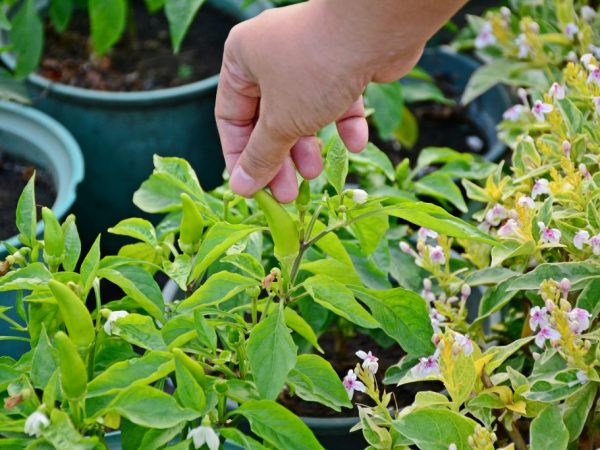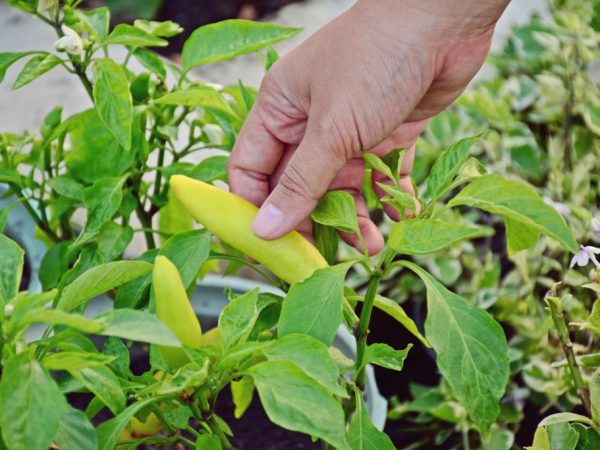The principle of picking pepper seedlings at home
Growing seedlings of bell peppers or hot peppers at home always causes certain difficulties, because the root system of a young plant is fragile in structure. We will tell you how to correctly and accurately dive pepper seedlings in the article.

The principle of picking pepper seedlings at home
Why dive
Pepper seedlings are demanding for correct replanting. Pepper roots are very fragile and do not tolerate changes in growing conditions, and if their structure is disturbed, they need a longer recovery time.
The picking process consists in the fact that each young bush (20-25 days old after planting the seeds) must be transplanted into a separate container so that the seedlings can receive more nutrients than in the case of planting in a common container. Separate containers help the seedlings form their growth and the entire root system faster.
When growing elongated seedlings in a common container, there are some negative points:
- Plants begin to shade each other.
- Root systems are intertwined, which greatly complicates the process of planting in a greenhouse or open ground.
It is for this reason that it is imperative to dive pepper seedlings. This will have a positive effect not only on the formation of stem growth, but also on the characteristics of the root system.
Procedure time
The best option is picking pepper seedlings in the early stages. Young plants grow better in new places and take root in the soil faster. Pepper seedlings should be picked only at the moment when 2 pairs of fully formed leaves appear on the plants.
It is believed that the ideal time for a dive is 2-3 weeks after the first shoots appear.
Some gardeners prefer to transplant the plant at a time when the cotyledons have just begun to form. Another part of summer residents believes that the best time to pick sweet pepper seedlings is after 3-4 pairs of leaves have been formed. But this can cause certain difficulties, because the root system is already practically formed and may slightly complicate the transplantation process.
Preparatory stages
Before diving pepper seedlings, you need to properly prepare it.
Soil preparation
Best suited mixtures of peat, garden soil and sand, in a ratio of 1: 2: 1. You can also add a small amount of minerals (superphosphate or ammonium nitrate) to make the soil lighter and more nutritious.
Preparation of containers

Convenient seedling jars
Next, you should pay attention to the containers for planting. The ideal container volume is 250-350 ml. In principle, containers of large volumes are often encountered. But, they are not particularly suitable for diving, because the roots of the plant are located close to the surface of the earth, so it will be difficult for them to fill the entire perimeter of a glass or pot.As a result, oxidized areas can arise from scratch, which will lead to the risk of disease.
The picking of seedlings should be carried out only in a container with a drainage system.
Watering
A few days before planting, it is recommended to abandon watering, because moisture will soften the soil, which will significantly complicate the process of transplanting into open ground or a greenhouse.
Carrying out a pick
- First you need to compact the earth in a pot or glass. A hole is made in the central part, with a depth equal to the length of the roots, and filled with a small amount of water.
- Carefully remove the seedling from the container. In principle, a small garden trowel can be used for ease of operation.
- The seedling must be moved into the prepared hole and the roots should be distributed so that they fill the entire space of the hole.
- The transplant is carried out at a depth so that the roots are back to back. Excessive emptiness will lead to rotting of the root system.
- After transferring the seedling, it is imperative to compact the soil around it.
- Now water the roots with 0.5 liters of warm water.
Quite often, there are conflicting disputes over the pinching of the plant. If you pay attention to the fact that the roots are sensitive to damage, then it is better not to carry out this procedure. Experts are convinced that pinching can be carried out only if the plant has gained a lot of growth or the root is quite long.
The root should not bend in the clockwise direction, because in this case the growth of the seedling stops immediately and further development will be impossible. For the correct placement of the roots, you first need to put the plant in the ground, and after compaction of the earth, pull it up a little. This will allow the spine to sit in an optimal position and align itself in the ground.
Care
Pickled peppers need proper care.
After a pick, the seedlings need a lot of sunlight. You need to place them on a windowsill or balcony only for 3 days. Until this moment, it is better to keep containers near the battery, where the seedlings can get the right amount of heat.
The next important principle of care is feeding. The first fertilization should be carried out one and a half weeks after transplanting. At this point, it is advisable to use mineral fertilizers. The ideal option is 50 g of nitrate, 40 g of superphosphate and 20 g of potassium, diluted in a 10-liter bucket of warm water. No more than 120 ml of fertilizer should be poured under each plant.
Top dressing can be done to protect seedlings from pests or diseases. To do this, 4 g of boric acid, 3 g of copper sulfate and 2 g of manganese should be diluted in 10 liters of warm water. Watering is carried out at the rate of 20 ml per 1 bush. The next 2 dressings are carried out with an interval of 2 weeks, with alternating mineral and organic substances.
Conclusion
The pick is carried out carefully and only at a certain time. It helps to increase the period of further fruiting of an adult bush. Also, after this procedure, the bush grows better in open, unprotected ground. With good care, you will get a high-quality crop in large quantities.


